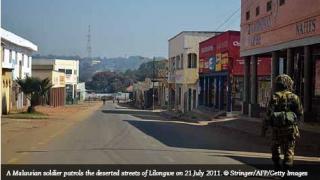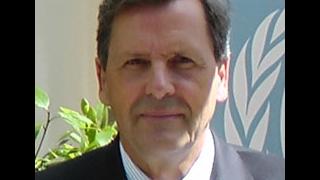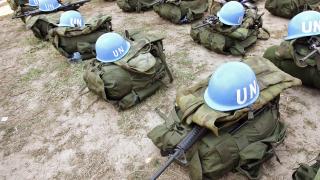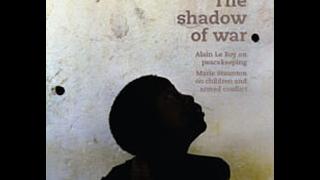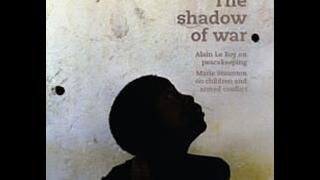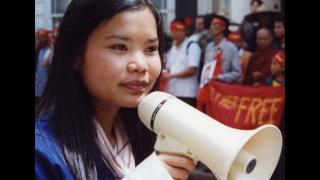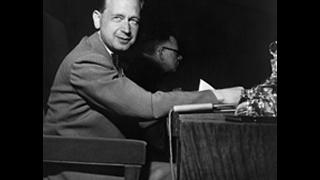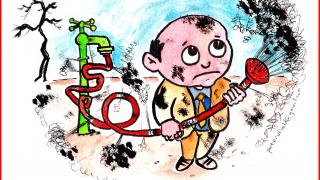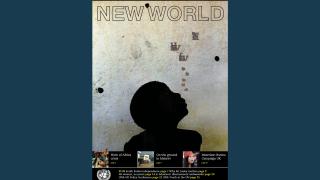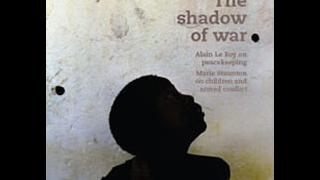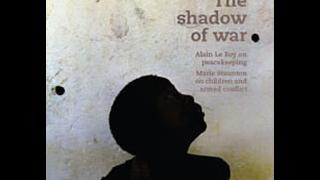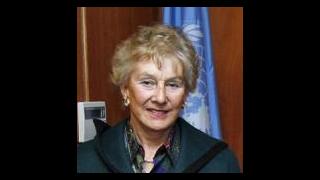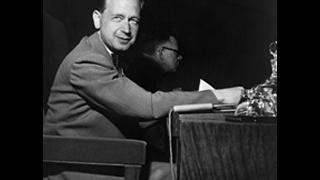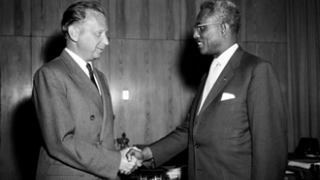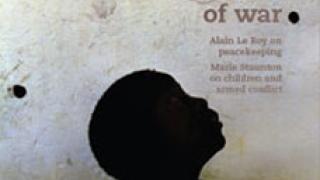
The UN Children's Fund (UNICEF) estimates that, over the past decade, conflicts around the world have displaced 20 million children, left six million permanently disabled or seriously injured, and over two million dead.
Children suffer disproportionately during armed conflict. The break-up of families can leave them homeless or without means to support themselves. Many are suddenly thrust into the role of primary breadwinner or caregiver for younger siblings or elderly relatives. Often, their schooling will have been interrupted, as will their access to basic necessities such as healthcare. Children are also at great risk of sexual violence, increasingly recognised as both a consequence and a weapon of war. A report by the African Union's predecessor body on the 1994 genocide concluded that nearly every female in Rwanda over the age of 12 who survived had been raped. And even after the cessation of hostilities, children are still under threat. An estimated 8,000 to 10,000 are killed or maimed by landmines every year.
| Six grave violations against children in conflict • Killing and/or maiming children • Recruitment and/or use of children as soldiers • Attacks against schools and/or hospitals • Denial of humanitarian access for children • Abduction of children • Rape and grave sexual abuse of children |
"We have lost a part of our life, and it will never come back" - these words, from an 18-year-old who witnessed the civil war in Burundi, ring especially true for child soldiers. It is difficult to know exactly how many minors are directly involved in conflicts in this way: numbers fluctuate due to ever-changing conflict scenarios; governments and non-state actors often try to conceal their use; and once they turn 18, their status changes and they disappear from the record. While it is not possible to give a global figure for the number of child soldiers at any one time, estimates are in the hundreds of thousands.
Many do not want to fight. They are forcibly recruited, kidnapped or pressured with threats against them or their families. But others choose to become soldiers. They may want to fight for a cause, gain respect, increase their status or simply feel safer by carrying a weapon. Some even have the support of their families, who believe that their children will be given regular meals, free clothing, wages, medical care and, in some cases, education.
Not all those classified as child soldiers are fighters. Some are used as guards, scouts, messengers, cooks, cleaners and, most worryingly, as slaves - sexual or otherwise - to adult soldiers. Children as young as five have been found in these roles.
Armed groups such as the Revolutionary Armed Forces of Colombia, Liberation Tigers of Tamil Eelam (LTTE) in Sri Lanka, and Lord's Resistance Army in Uganda are infamous for their use of child soldiers. Others are less well-known, including separatists in Thailand, Maoists in India, and groups in Burma and the Philippines.
Since the World Summit for Children in 1990, the UN has sought to draw attention to the plight of children affected by armed conflict and to take steps to protect their rights. In 1996, it asked women's and children's rights advocate Graça Machel to undertake a study on the impact of armed conflict on the young. Her groundbreaking report revealed the scale of the problem - about one billion children live in territories affected by conflict – and shifted the perspective from one of children as bystanders to one of children as targets or active participants.
The report prompted a decision by the UN General Assembly to create the post of Special Representative of the Secretary- General for Children and Armed Conflict (SRSG). The SRSG's office has been instrumental in monitoring the use of child soldiers, naming and shaming offending parties, identifying new strategies to protect children, supporting rehabilitation of child combatants, and raising political and public awareness and support.
 One key objective for the SRSG is to encourage states to implement the Optional Protocol to the Convention on the Rights of the Child on the involvement of children in armed conflict. Adopted in 2000, the Protocol is an 'add-on' agreement to the convention which sets the minimum age for conscription and direct participation in hostilities at 18 and calls on states to initiate reintegration programmes for former child soldiers. To date, 142 UN member states have ratified this treaty, while 51 have not.
One key objective for the SRSG is to encourage states to implement the Optional Protocol to the Convention on the Rights of the Child on the involvement of children in armed conflict. Adopted in 2000, the Protocol is an 'add-on' agreement to the convention which sets the minimum age for conscription and direct participation in hostilities at 18 and calls on states to initiate reintegration programmes for former child soldiers. To date, 142 UN member states have ratified this treaty, while 51 have not.
To mark the 10-year anniversary of the Protocol in 2010, Radhika Coomaraswamy, the current SRSG, launched "Zero under 18", a two-year campaign aimed at securing the universal ratification of the Protocol. The campaign will call on all states to ratify the Protocol and, if they have already done so, encourage others to. Universal ratification will demonstrate a moral consensus on the need to eliminate the use of children in war.


